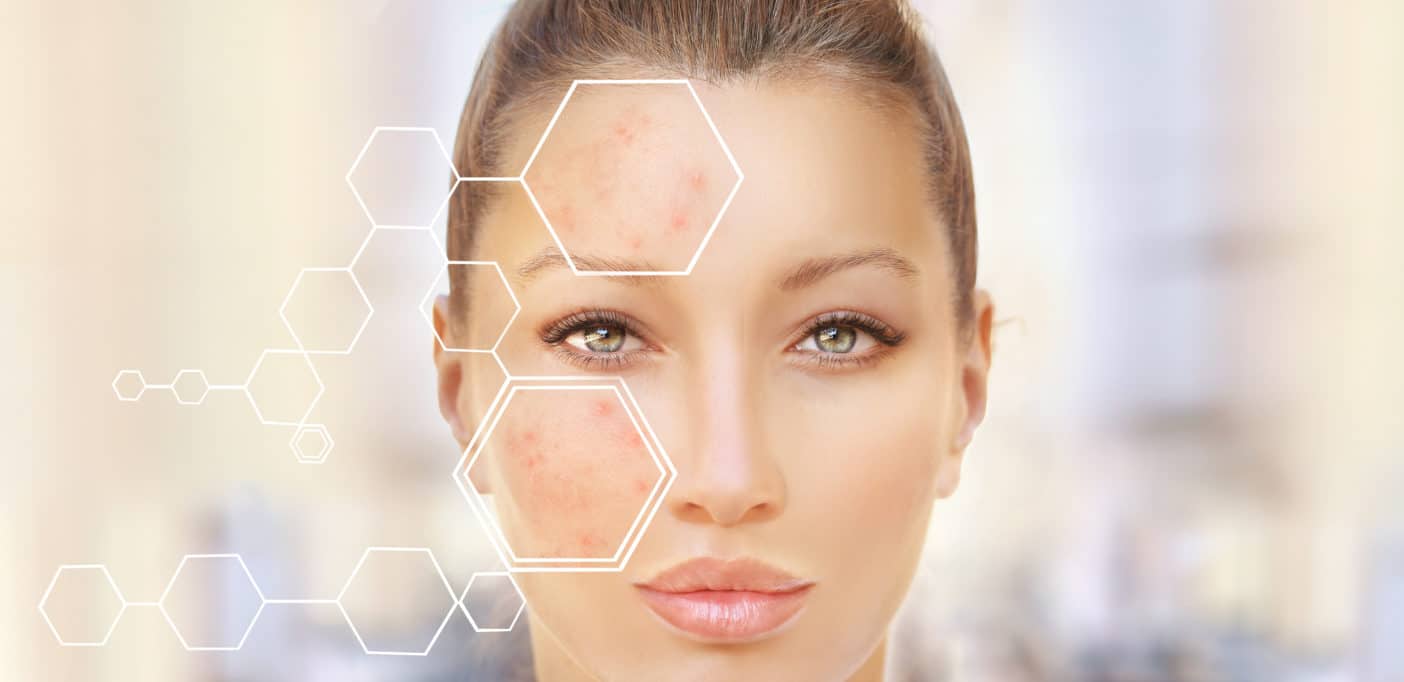Microbiota

The terms microbiota and microbiome describe, in a narrow sense, the totality of all microorganisms that colonise a living being. In humans, the microbiota consists of bacteria and fungi.
When a foetus grows in utero, it is still largely free of microorganisms. However, this changes at birth, when the newborn comes into contact with its mother’s microflora. At first, only the baby’s mouth and throat are colonised, but after just one day the microorganisms have spread throughout the entire intestinal tract.
The large intestine is by far the most densely populated area of the body: there are about 1000 germs in every gram of stool! Also densely populated are the skin (“skin flora”), the nasal cavity, the oral cavity, the vagina and the tympanic cavities. However, the microbiota is by no means bad, quite the contrary.
While researchers generally viewed microbes as pathogenic invaders for a long time, it is now known that humans form a fascinating symbiotic community with microorganisms. We humans need the microbiota, because it is in principle beneficial to our health. However, only if the delicate balance of the microbiota is not disturbed.
Skin problems can also be based on pathogenic germs
Around 90 percent of all microorganisms behave neutrally towards healthy skin. About five percent are considered undesirable because they actually have a pathogenic effect. The remaining five percent, on the other hand, are absolutely beneficial and have a positive effect on our health. If this composition is disturbed because certain microorganisms gain the upper hand, this can have a very negative effect on our skin.
This usually results in eczema, blemishes, pimples and other inflammatory changes. There is a very simple reason for this. The approximately 10,000 different types of microbes have specialised in different parts of the body. In predominantly covered body regions such as the armpits, the toes or in the groin area, moisture- and heat-loving microorganisms feel most at home.
In regions that are particularly rich in sebum, such as the nose, the forehead and the nasolabial folds, lipophilic bacteria in particular settle. These in turn break down the sebum and in this way create an environment that protects against unwanted and harmful germs. However, this only works if the microbiota is intact and in balance. This is usually not the case with chronic and/or inflammatory skin diseases. Here, the skin barrier is often already so disturbed that independent regeneration is no longer possible.
The microbiota of our skin
Science has known for a long time that our skin has a chemical, immunological and physical barrier function. According to recent studies, however, there is another barrier function that is taken over by the microbiota. This is because it forms a highly effective microbial barrier, which means that harmful external influences do not enter the skin directly, but rather they come up against a very lively and active microbial layer.
This interacts with the harmful influences by dealing with the chemicals, “foreign” microorganisms or critical substances. And not only that: the existing microbiota also prevents the spread of the newly arriving microorganisms, as it already occupies all available areas and niches. Medications such as antibiotics and cortisone, by the way, can also severely disrupt the interaction of the microbiota! Those who are dependent on such and similar medications should therefore definitely pay attention to a microbiome-friendly skin care!
However, the important microbial protective barrier is often simply “washed away” under the tap or in the shower. Many soaps, shower gels and even biocidal deodorants contain huge amounts of surfactants, alcohols, and emulsifiers. They damage or destroy the microbiota, and not infrequently with fatal consequences. The gaps that occur in the microbiota then form perfect “holes” through which pathogens can penetrate the skin. Other microorganisms that are already present in small amounts in our skin flora suddenly spread extremely when there is an imbalance. One example is Staphylococcus aureus, which can cause skin irregularities.
It is now known that the composition of the microbiota can be influenced or controlled. This means that “good” microorganisms can be promoted and “bad” microorganisms reduced. Among other things, this is made possible by probiotic substances, i.e., living bacteria such as lactobacilli, bifidobacteria and enterococci. These living bacteria are present in the human organism anyway. But the so-called prebiotic substances can also positively influence the balance of the microbiota, because they serve as “food” for the “good” microorganisms, so to speak.
As a rule, the prebiotic substances are carbohydrates such as lactulose and the oligofructose inulin, which serves as an energy store for various plants. Interestingly, they are only important for the “good” lactobacilli and bifidobacteria because they are metabolised by them. Incidentally, lactobacilli and bifidobacteria are also found in the intestine, where they are responsible for a slightly acidic pH value. This value is an important prerequisite for the work of the digestive enzymes. Fortunately, our food contains many prebiotic substances. In artichokes, for example, but also in chicory, dandelion, and salsify.
The role of the microbiota in cosmetics
We have already explained that an intact microbiota is important for our skin and serves as a natural protective barrier. But how can this be implemented in cosmetics?
Products with probiotic and prebiotic substances are no longer an exception. In the USA, more than 40 percent of the so-called “millennials” already use probiotic cosmetics. Interest continues to grow, especially since even renowned magazines are increasingly devoting themselves to the topic. If we look at the international cosmetics market, the focus is clearly on microbiome-friendly facial care. The body care and hair care segments follow right behind. To stay with the example of facial care: The natural microbiota also includes propionibacteria, which metabolise the skin’s own lipids and in the process release substances that protect against “bad” microorganisms. In acne, however, the pores are clogged due to excessive sebum production, which leads to inflammatory reactions. However, the skin’s appearance can be normalised again through certain substances of bacterial origin. Microbiome-friendly cosmetics are also excellent in the anti-aging sector, for whitening, for the care of skin diseases as well as for supporting collagen formation and are more than just an alternative to conventional products. The innovative substances contribute to the protection and optimal balance of the microbiota by reducing the “bad” bacteria and promoting the “good” microbes.
An exciting example is the extract from the leaves of the Chilean ground shrub. It ensures that the formation of the antibacterial, skin-own peptide beta-defensin is stimulated. This peptide attaches to “bad” bacteria and perforates their cell membrane. For example, it works very effectively against the previously mentioned bacterium Staphylococcus aureus, which causes severe skin irregularities in a certain number.
Phytosterols from rapeseed oil also lend themselves to microbiome-friendly cosmetics. While they stabilise cell membranes in plants, they show an anti-inflammatory effect in humans. The phytosterols restore the balance of the microflora and the damaged skin barrier, they improve hydration and can soothe irritated skin. Thus, they are the ideal solution when the skin barrier is disturbed by excessive personal hygiene, wind, sun exposure or dry skin. The active ingredient can even be used for baby care because it is extremely mild.
And then there is an active ingredient from the seeds of the “miracle tree” Moringa oleifera, which is traditionally used as a skin antiseptic, to treat inflammation and joint pain, and for eye rinses. The seed also has a bactericidal effect. With its help, undrinkable water can be purified. In cosmetic products, the active ingredient protects the “good” bacteria from environmental stress.
Cosmetics for a healthy microbiota from Cosmacon
Without an intact microbiota, our skin suffers. It becomes susceptible to external influences and harmful germs, tends to become inflamed and dries out. Cosmacon supports you in developing high-quality cosmetics that gently support our microbiota.
